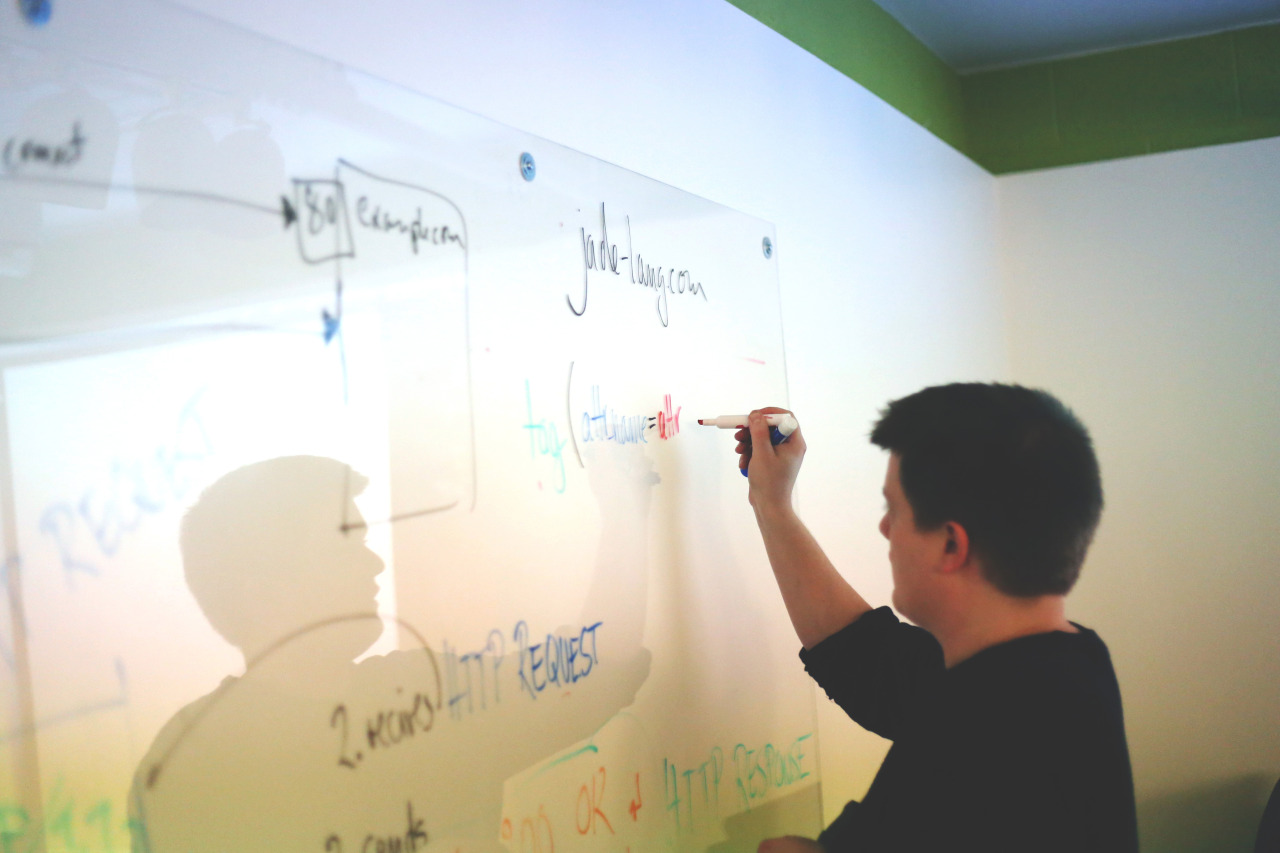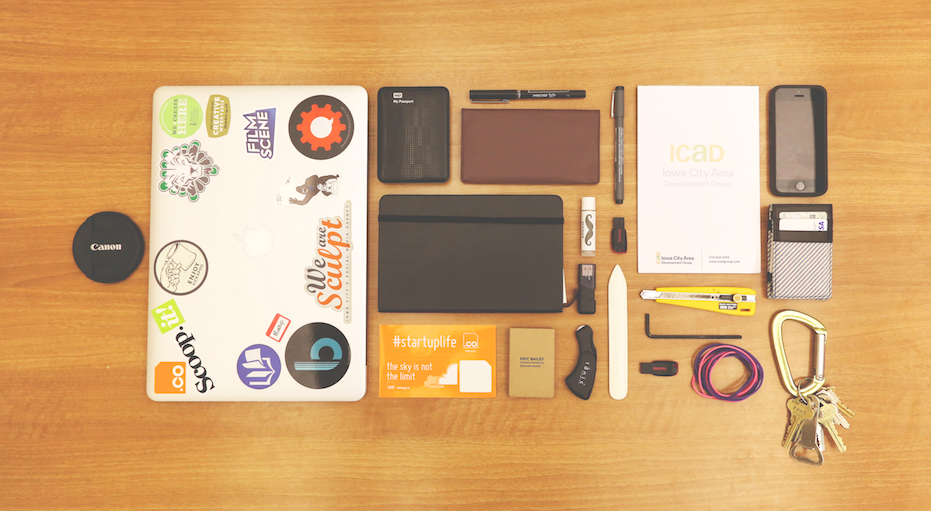Startups and enterprise companies alike are turning to remote/agile workplaces instead of the traditional office space.
It’s no wonder why — individuals who work remotely are reportedly more productive and seemingly happier.
But what about collaborating remotely?
It can be challenging to master remote collaboration because it’s more complex than simply deciding whether or not to wear pants for that video call. (Definitely wear pants. The one time you don’t, you will inevitably have to get up.)
How do you replicate the in-office banter over the computer? How do you communicate effectively without blowing up someone’s email?
Questions like these often come up when considering how to collaborate with remote coworkers. These tips will help quell communication concerns and make remote collaboration more effective.
1. Be Available
While working collaboratively means you’re working with others on a project, there are often times in which you work independently and then meet back together to share ideas. In an office, you can pop your head over a cubicle wall to run a quick idea by your coworker or you might mention something when you’re walking down the hall.
Obviously, you don’t have that same experience when you work from home. However, staying available on chat, email, and phone during work hours provides the same opportunity for experiences like those to happen.
And don’t simply flip the switch to “available” while begrudgingly responding to a chat or being irritated you have to answer the phone. Genuinely welcome calls, emails, or chats from coworkers — it will help keep the lines of communication open and conversations will be more natural.
If you turn off communication, you completely turn off the opportunity to work collaboratively, let alone effectively.
2. Don’t Rely on Email
With the ability to chat, post messages on message boards, and pick up that old-fashioned phone, save emails for important communication that’s more lengthy. Similarly, stick to email when you need to address multiple topics of conversation in a single message. Don’t hit the dreaded Reply All when it’s unnecessary, and keep your emails to the point.
Avoid bombarding your coworker with emails for shorter conversations and send them quick chats instead. You could always pick up the phone, but be courteous and send them a quick chat to see if they have time to talk. It will avoid interrupting them if they’re in the middle of something that demands their attention. Be courteous and purposefully communicative.
Here are some great communication apps you and your team might find useful:
- Google Hangout: You have to have a Google account to use this feature, but it’s well worth it. You can chat or have a call with or without video.
- Campfire: This is a chat feature within Basecamp (formerly 37 Signals), which allows for on-the-fly conversations while collaborating on a project.
- Hip Chat: Hip Chat is secure, plus it allows for private and group chats, file sharing, and integration with a variety of APIs, all while staying synced up.
- Calliflower: This app makes conference calls a possibility, whether you’re working with a tablet, phone, or browser.
- Skype: The household name for video calls.
Keep in mind that, if you have a dedicated office space, it’s a lot easier to communicate for the simple fact that people are going to be able to hear you better.
If you’re trying to have a video chat from Starbucks, chances are, the person on the other end isn’t going to be able to hear you over the coffee shop atmosphere — and you’ll really be in trouble if the cafe has live music. When jumping on a video call (or even just a conference call), try using headphones and a microphone to keep background noise at bay.
Or, if you live in a city like San Francisco or New York, you might want to check out Breather, which allows you to rent a quiet workspace for an hour or two.
3. Hang Out and Don’t Be Strangers
As I mentioned, Google Hangouts is an amazing tool that allows you to have a video chat with one person or multiple people. Whether you choose to use Google Hangouts or another video chat program, maintaining regular contact with the coworkers with whom you’re collaborating is going to make the remote aspect of your collaboration seem not quite as remote.
Stay current with project progress and keep faces fresh. When you can see your coworkers faces, read their mannerisms, and actually talk, you might not be as guarded when it comes to communicating, especially if it’s happening frequently.
Video chats can also be very useful in sharing whiteboards. With a well-positioned computer, you can see the scribbles that matter through video.
Even as a writer, I’ve been on video calls with clients who have shared whiteboards with me. Through the video, I could see everything in action just as if I was there, and I was subsequently emailed pictures of the board, which were useful when reflecting back on the conversation.
We recently wrote about using video to collaborate when we interviewed Chris Weiher about his live stream tutorial website Watch Me Work. Video is incredibly helpful, and it’s definitely something we encourage.
The bottom line is that maintaining a regular communication schedule lets you and your team stay current with the progress of a project, have the ability to ask questions and gain clarity, and communicate more easily.
4. Have Compatible Technology
Don’t even think about working remotely — let alone trying to collaborate — if your technology isn’t up to par. Your internet must be fast enough to handle video chats, large document sharing, and multiple tabs.
And even more importantly, your computer needs to be up to date and running the same programs as your coworkers. Compatibility issues could cause you to waste hours of time, whether it’s just trying to open the document or reformatting issues that popped up between versions or file types.
Although those working for larger companies likely have the same company computer, laptop, or tablet, if you’re an entrepreneur or a startup where each employee is using his or her own, it’s imperative that you’re all on the same platform and using the same programs (as well as the same versions of programs) to keep collaboration effective and running smoothly.
5. Use Collaboration Tools
There are a number of amazing project management/collaboration tools, such as Trello, Basecamp, or Creately.
At ThinkApps, we love using Slack because everything is accessible in one space, which makes it incredibly user-friendly. (And the tech world seems to agree — between eight and ten companies have propositioned CEO Stewart Butterfield with acquisition.)
There are a ton of other project management and collaboration tools out there, so don’t be shy when investigating what would work best for your team.
Collaboration tools not only help you keep track of what you’re doing but help your team as a whole to stay organized. When you’re faced with high-pressure deadlines and complex projects, staying organized and having the ability to monitor the status of a project can hugely affect the outcome of the project in a positive way.
This is especially true for developers, designers, writers and content managers, and other collaborative groups who work remotely and take on large, complex projects with multiple stages and components.
6. Don’t Forget About Time Zones
You might be an hour into work at 9am, but your coworker three time zones over might still be hitting the snooze button.
Especially when you’re collaborating, be mindful of what time zone your coworkers are in and schedule meetings or calls when the work time overlaps. Integrating effectively across time zones, cultures, and work styles might take a while to get used to, but it’s not impossible.
Pay attention when scheduling a time to talk and make sure you’re aware of each other’s time zones — in fact, when scheduling calls with coworkers who live in different areas of the world or even just the US, always include the time zone in the message when scheduling so that everyone is clear.
Always ask before scheduling because it shows you respect your coworker’s time and you’ll be able to find a time to talk in which you both can dedicate your attention to the task at hand.
Obviously, if everyone is on board with being notified in real time for urgent matters, do pick up the phone, but this is one time it’s excusable not to be met with an awake and chipper hello. Then again, those urgent calls aren’t usually happy ones to begin with.
7. Get Back to the Basics
Don’t forget that not only are you human, but the coworker you’re connecting with is human, too.
Establish a positive working relationship and value your coworker’s contributions. Make sure to take a few minutes to have some “water-cooler” talk — it will help build a rapport and relationship with your coworkers.
Consider how you communicate, especially when working remotely. Your tone, intent, and sarcasm cannot always be easily deciphered through text. In fact, it’s usually best to leave sarcasm out of the workplace, but if you let it slip, at least let it be on a video chat where your tone and expression can help set up the context.
Keep criticism constructive — when providing feedback to others in your group, be sure to point out the things he or she did well in addition to the areas that need work so you don’t sound like a Negative Nancy. Your comments will be taken more seriously, and the group will benefit from honest feedback.
Remember: Communication Is the Key
When working remotely, it’s critical that you remember your basic communication skills. We’ve stressed throughout this post that communication is the key to effective collaboration — and that’s true whether you’re working remotely or in an office.
What else helps you collaborate effectively while working remotely? Let us know via Twitter.





